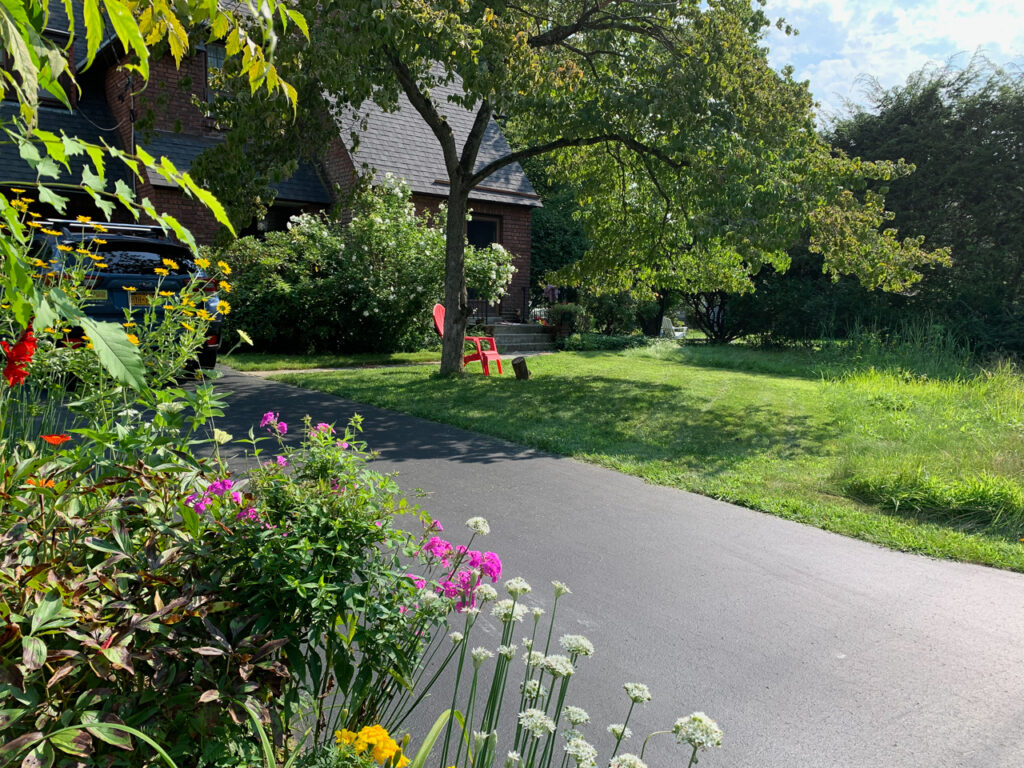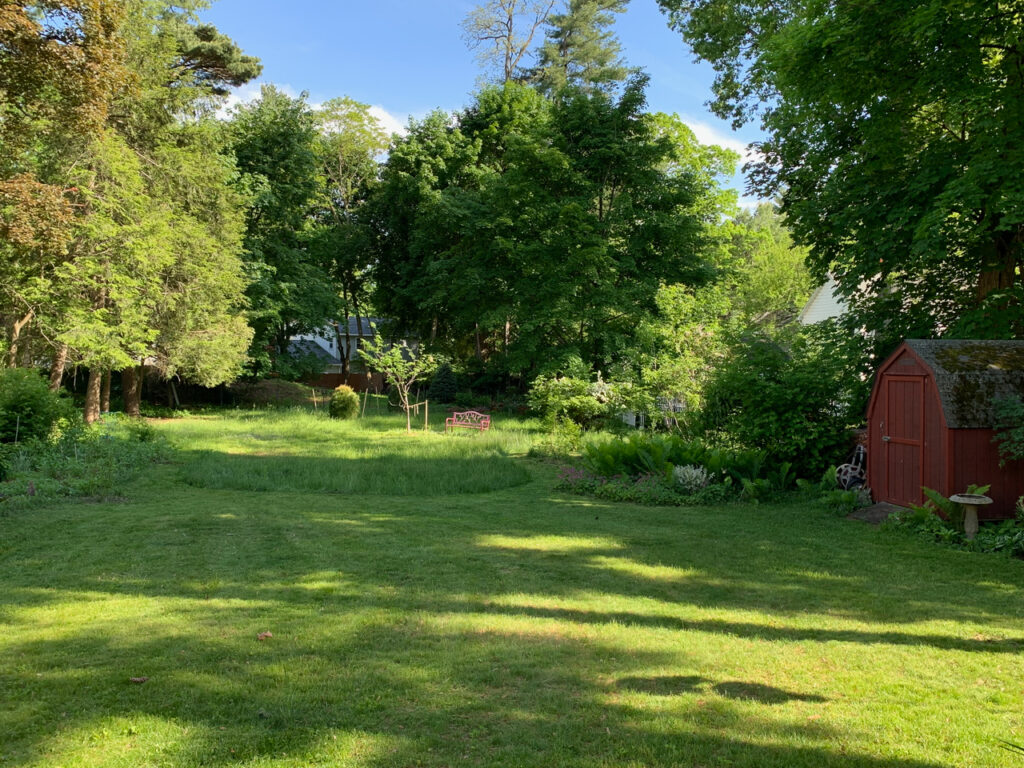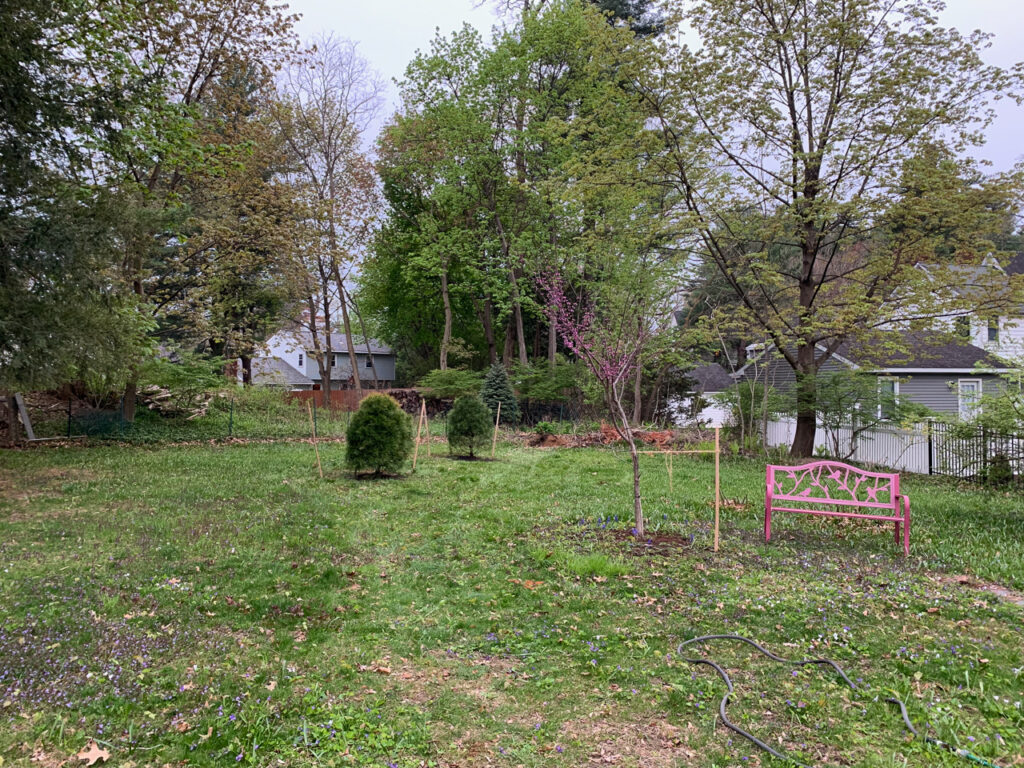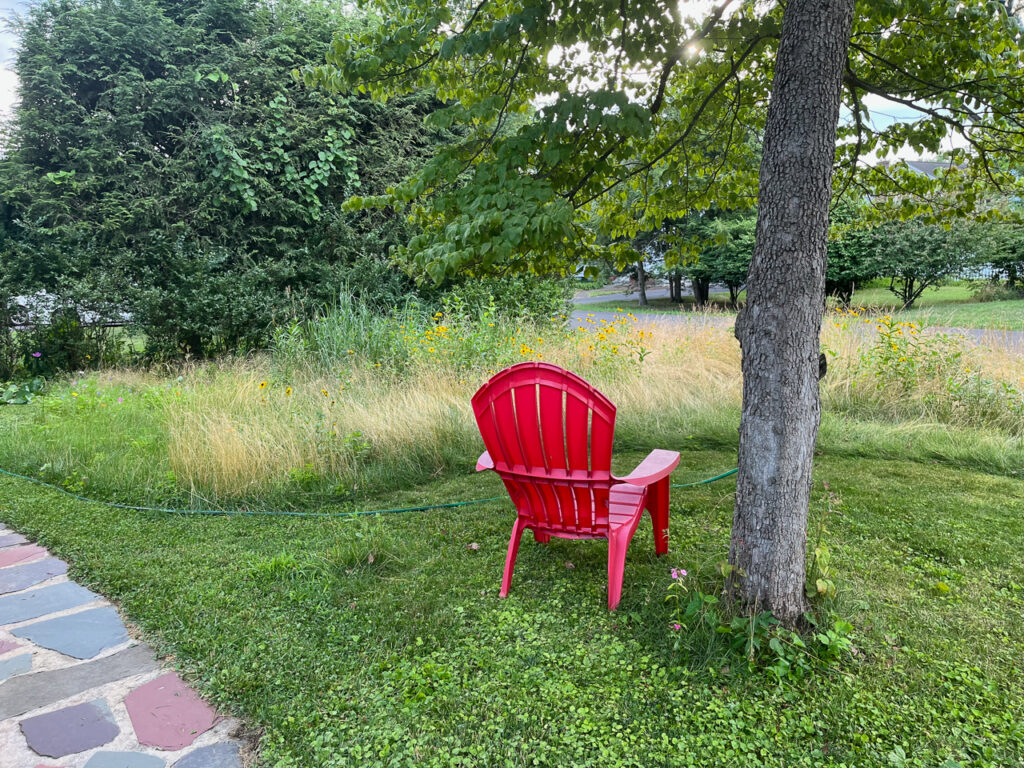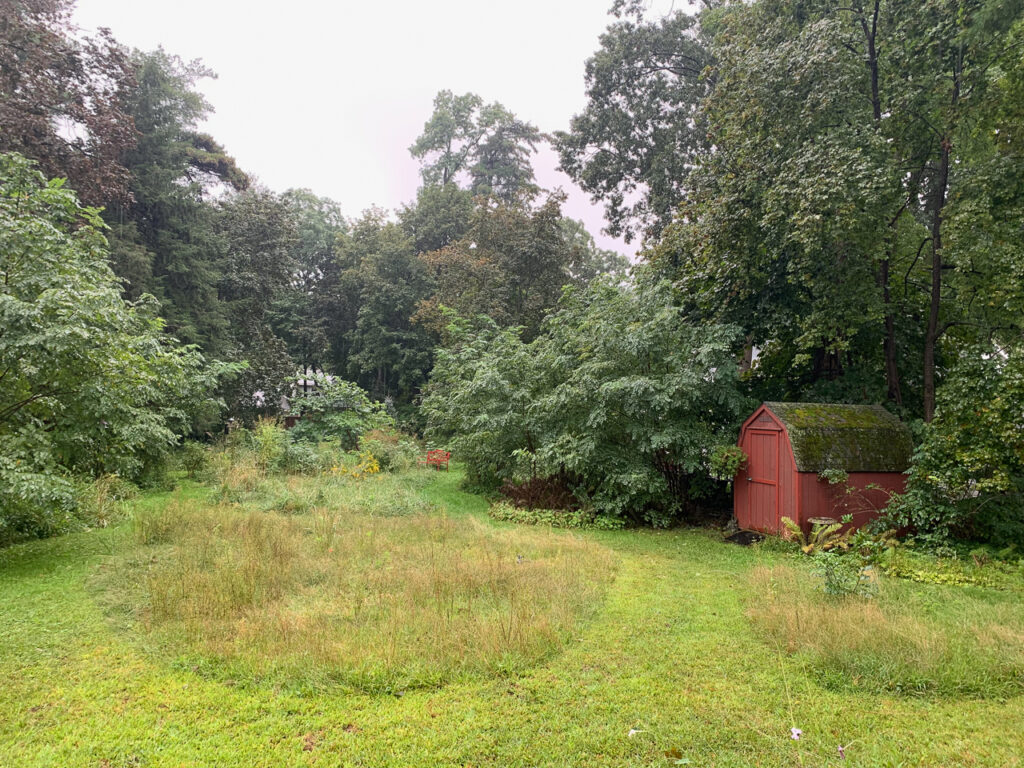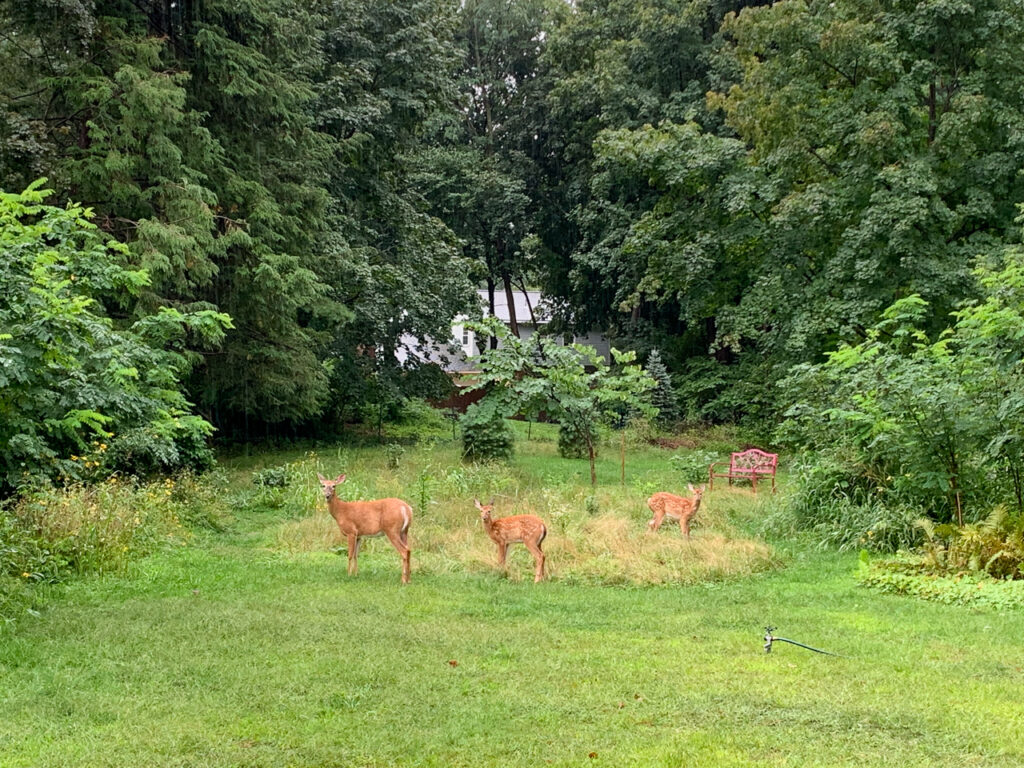
Judy’s Way
Judy’s Way is an experiment in suburban rewilding in honor of my mother, gardener and nature lover, Judy Blaisdell Spevack. Neighbors and visitors are welcome throughout the year.
In a small effort to help reclaim the shrinking woods and meadows in this suburban area, I have opened our family’s quarter-acre lot to wildlife. Bird, bat, deer, rodent, and insect species coexist here. A large wildlife pond provides a much-needed communal watering hole for all, including noisy mating toads, dragonflies, diving beetles, snails, and other aquatic life. The suburban lawn is given up to wildflowers and “weeds” and is now dense with butterflies, moths, and the summer chorus of insects. Spaces like this are especially critical to pollinator species’ survival.

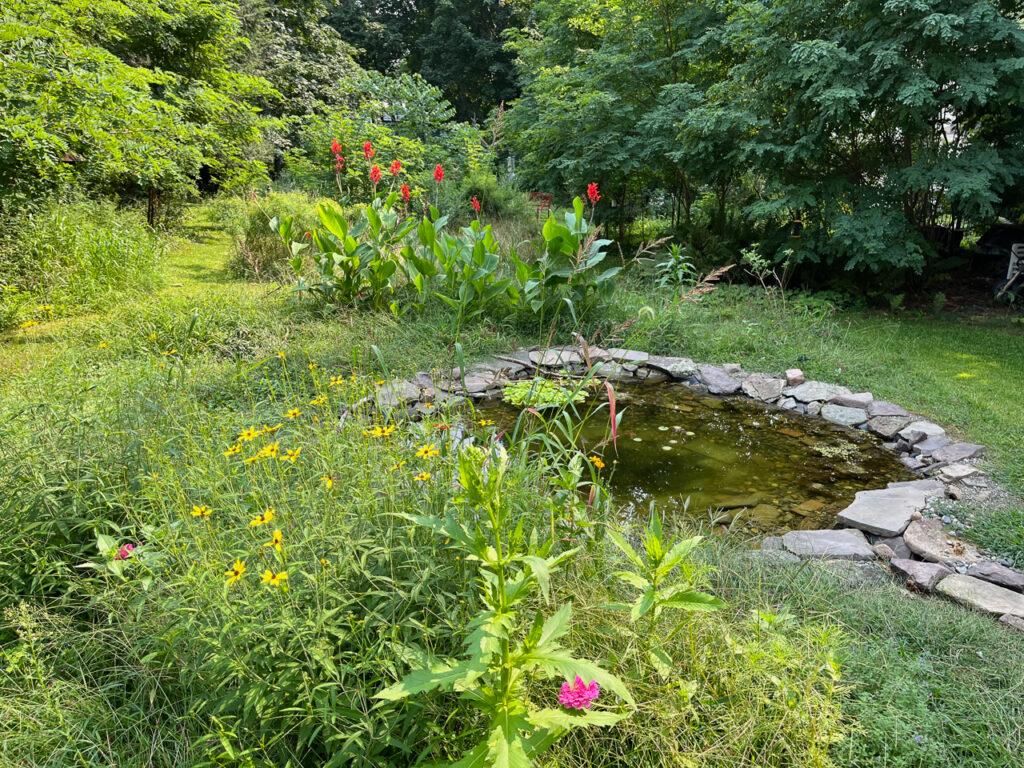
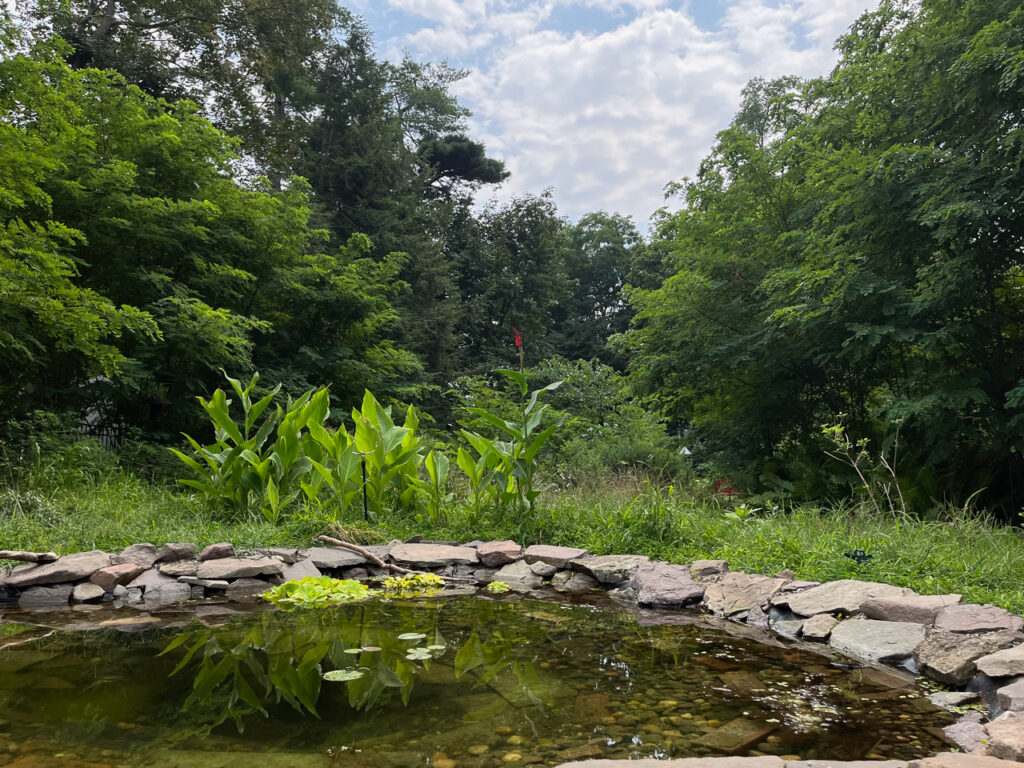
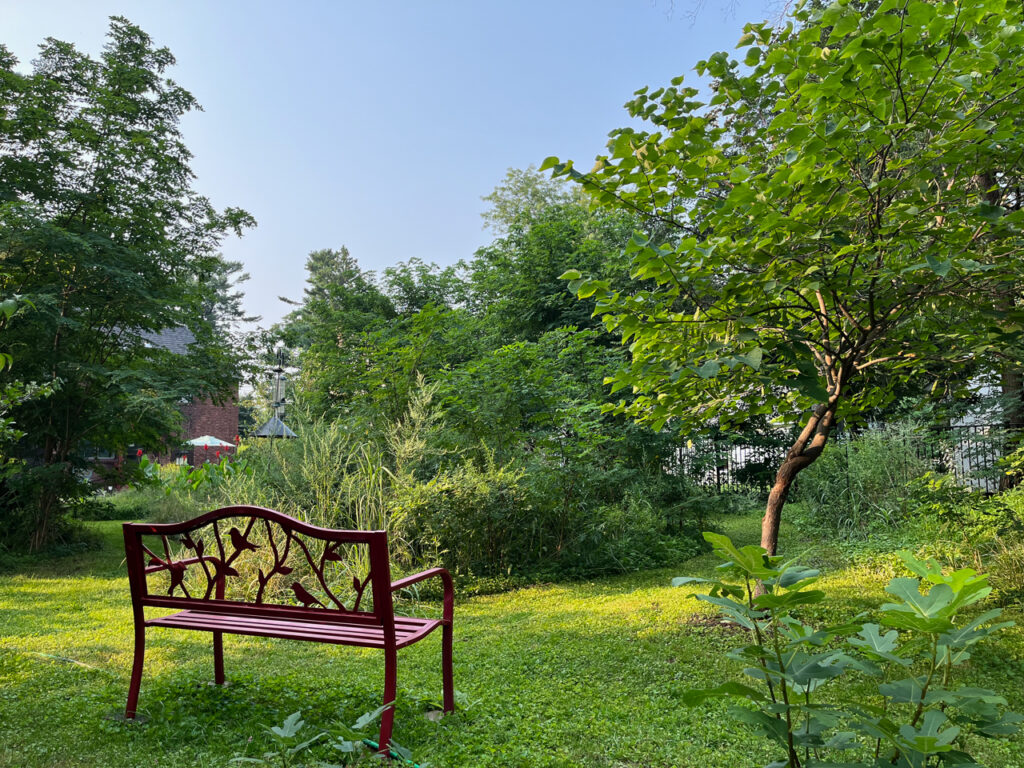
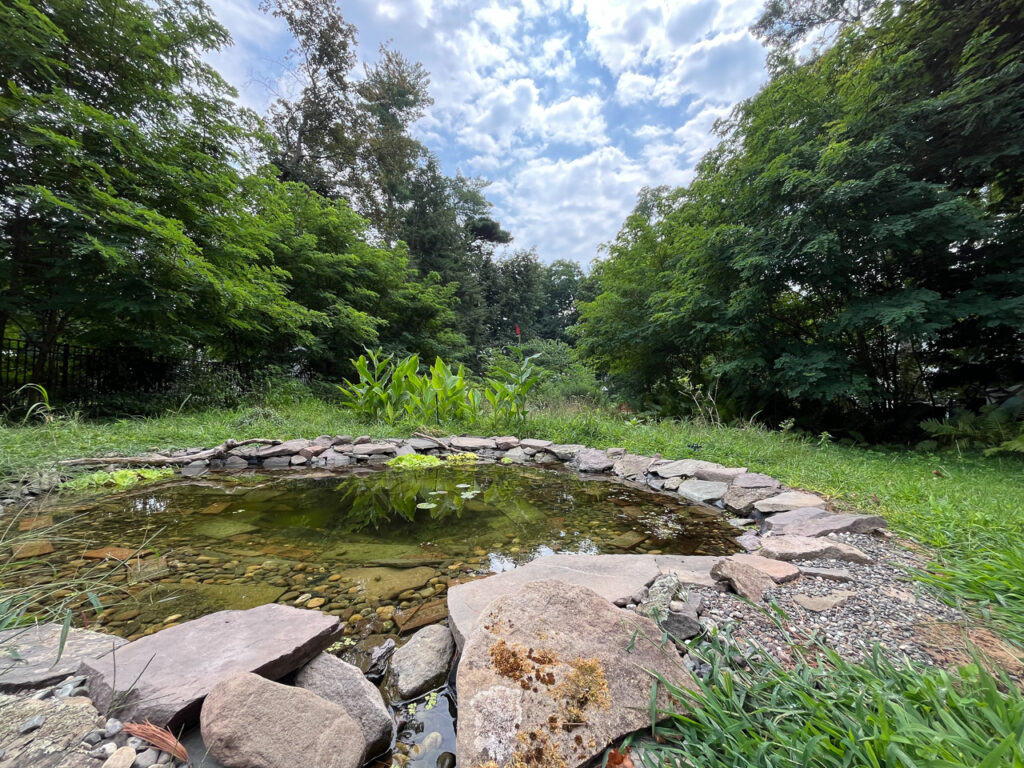
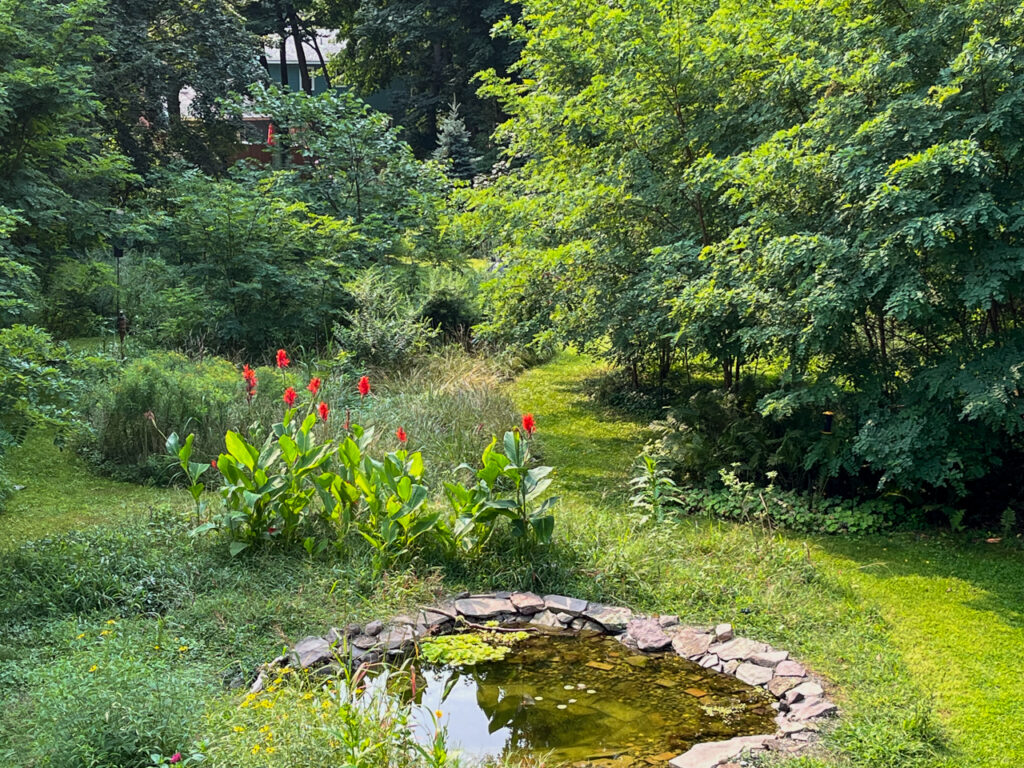
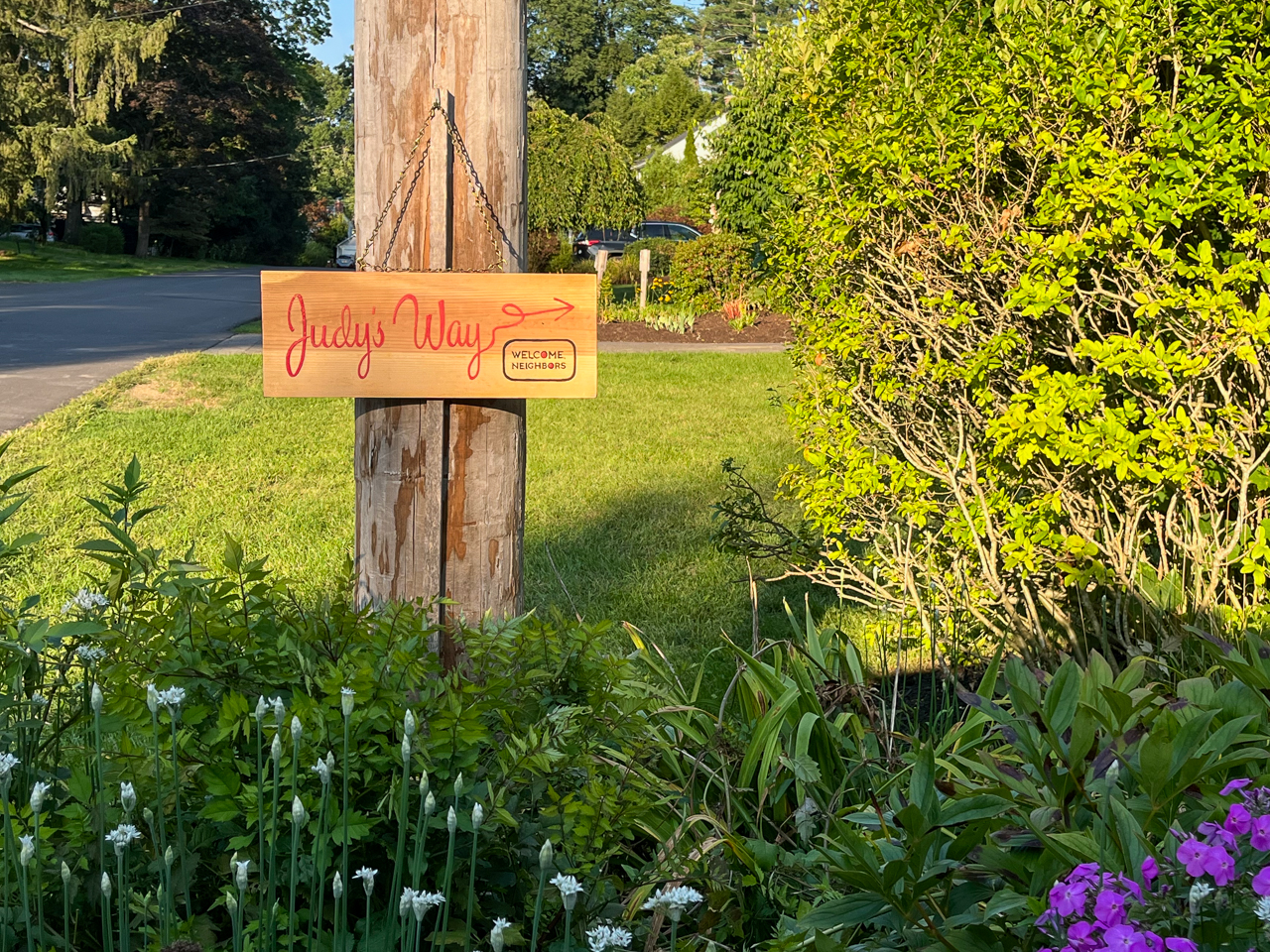
Growing up here in the 1970/1980’s, our backyard was lush and shady with rows of towering locus. My mother, a master gardener, was somehow able to cultivate flowering shade plants and even grow vegetables in this sheltered yard. For nearly 50 years, until her death in 2018, she could be found here making gardening magic.
Originally part of the Mohawk Nation, the site is located in the Town of Bethlehem, Albany County, NY. Farmland-turned suburb early in the last century, the lot and house was purchased by my parents in 1972. At that time, the yard was dense with white pine, maple, and locus.
Over the years, more of the 100’ locus and pine began to topple, and in 2020 a microburst uprooted the remaining trees, so we decided to take them down. This left a bright south-facing corridor, and many of my mother’s shade plants struggled to survive the new hot climate. Instead of replanting the traditional suburban landscape, I decided to experiment by allowing the yard to regrow as it wished – with little intervention save a walking path, a wildlife pond, a few flowering bulbs, and generous helping of wildflower seed each spring.

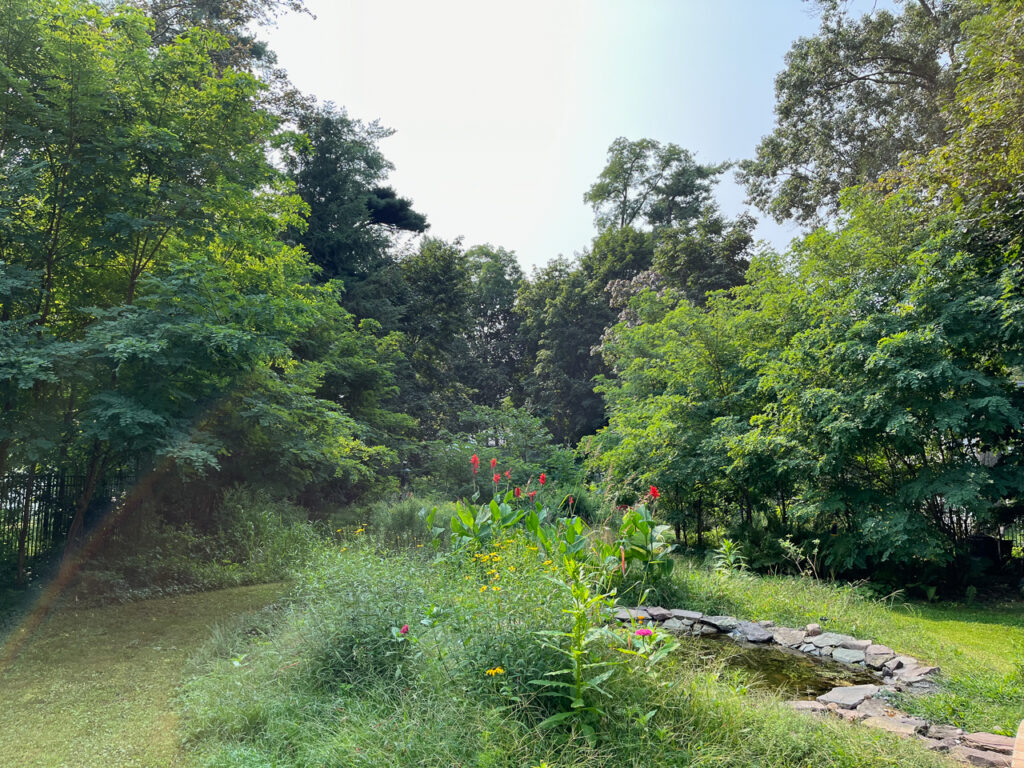
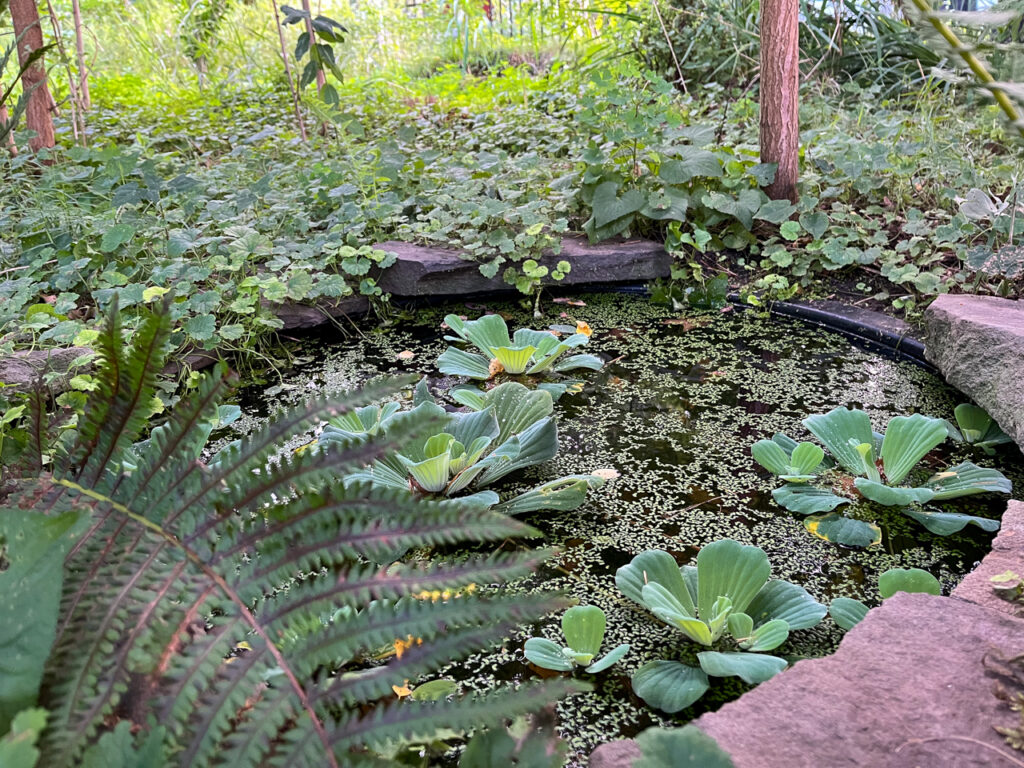
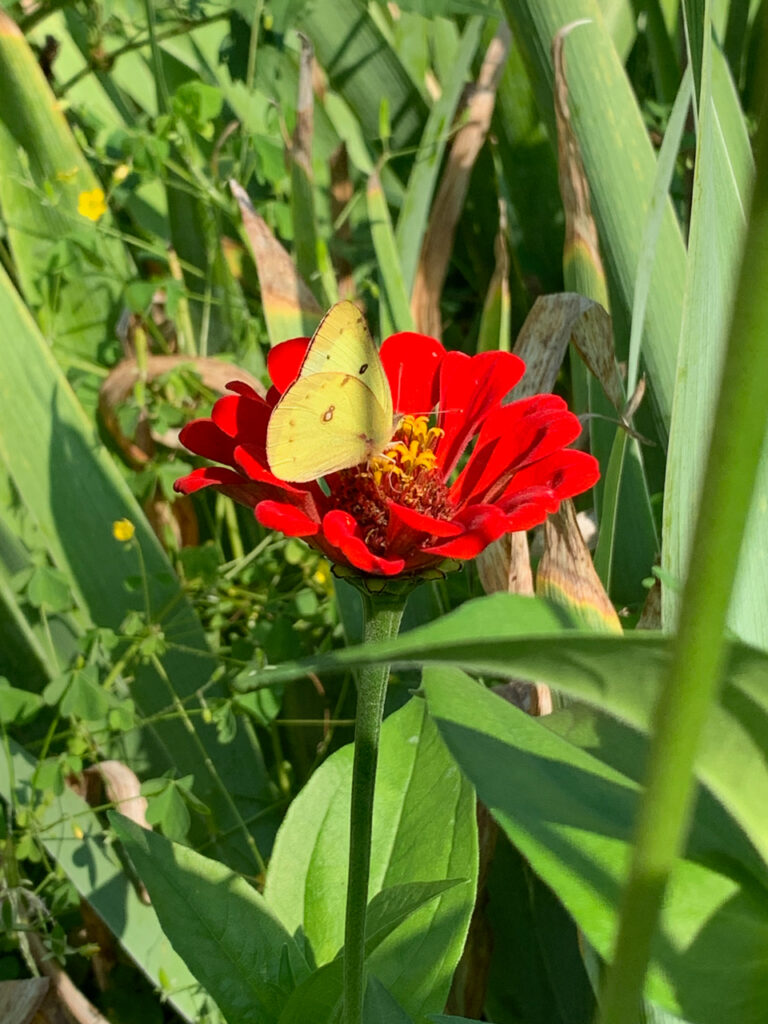

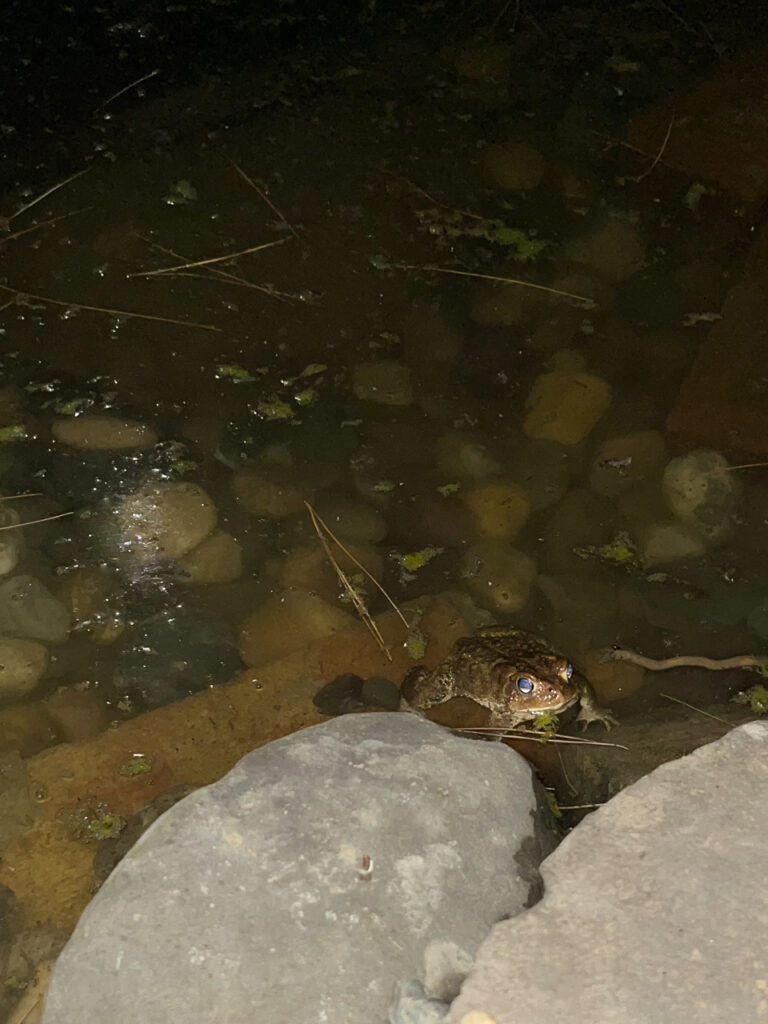
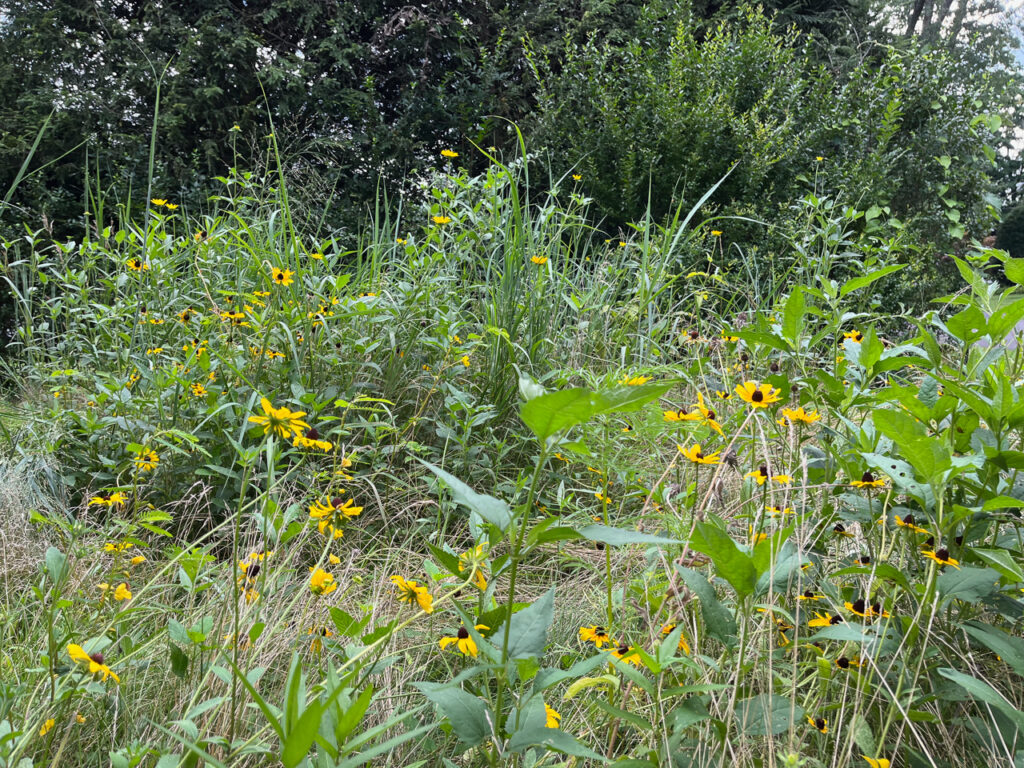
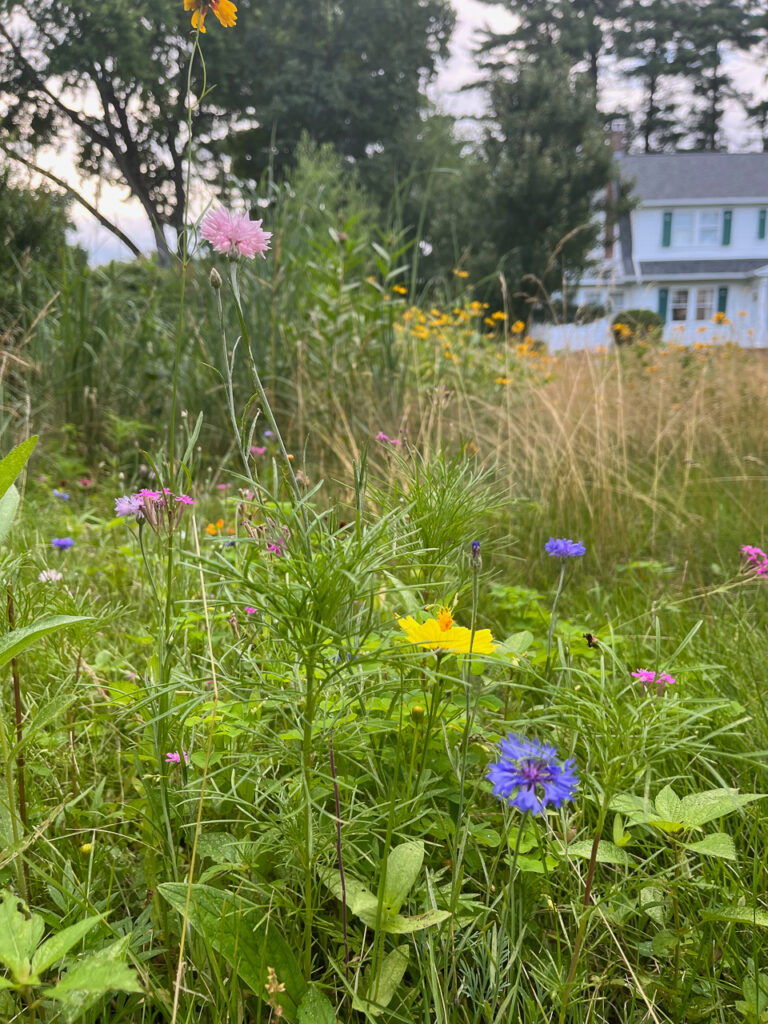
After two years the locus, whose roots have blanketed the earth below for decades, have sprouted into small shade trees in which numerous bird species congregate. Aggressive “weeds” and ivies have moved in, but so have diverse species of pollinators, butterflies, moths, birds, crickets, grassoppers, and other insects. Deer with limited space to roam and rest due to new housing developments in the area sleep in soft, tall grass.
It’s a work in progress – a collaboration with wildlife for wildlife. An oasis of wildness in the suburbs. A place to remember Judy.
